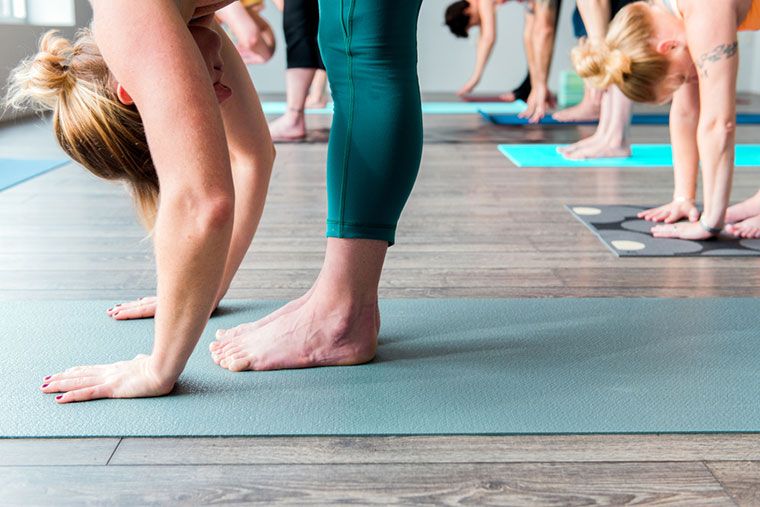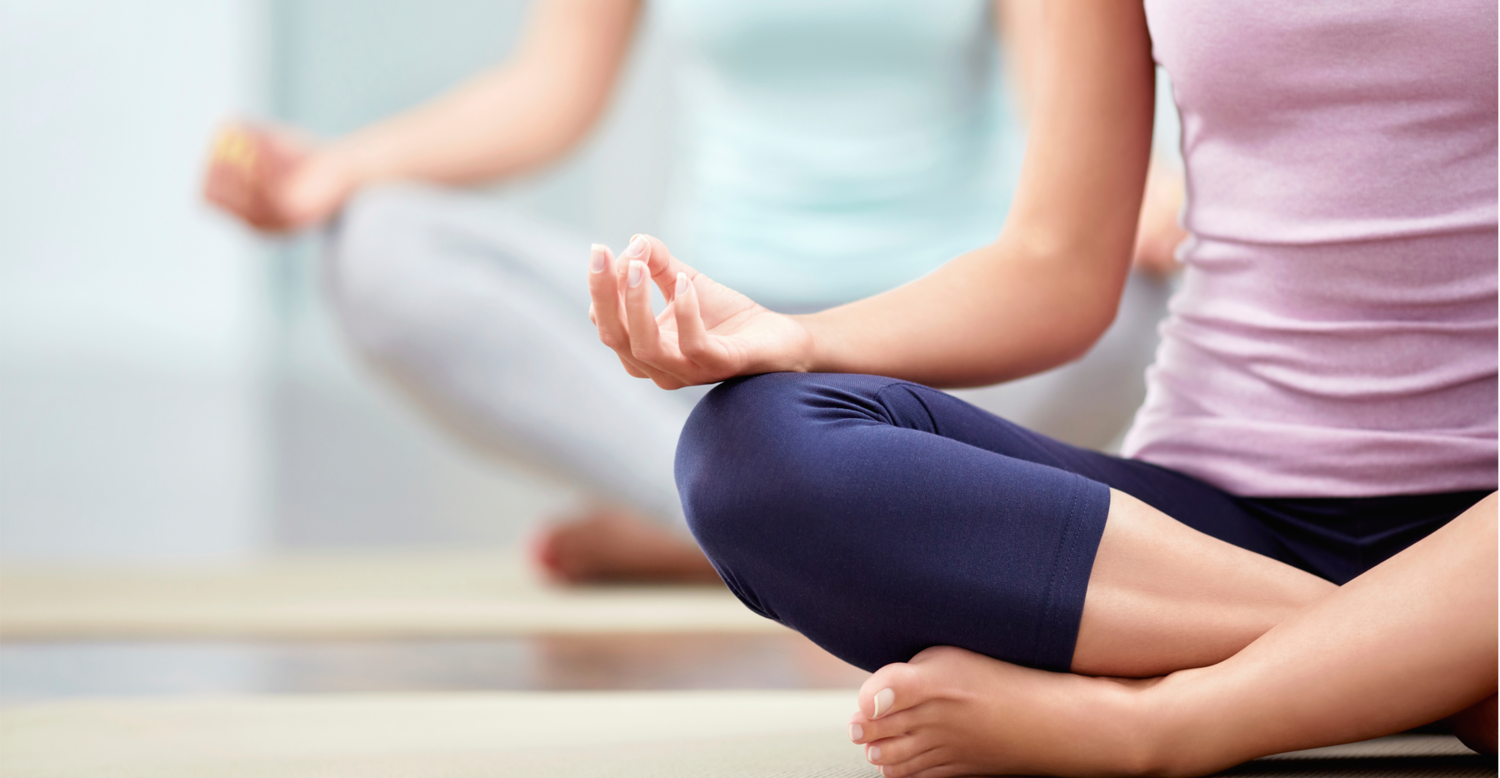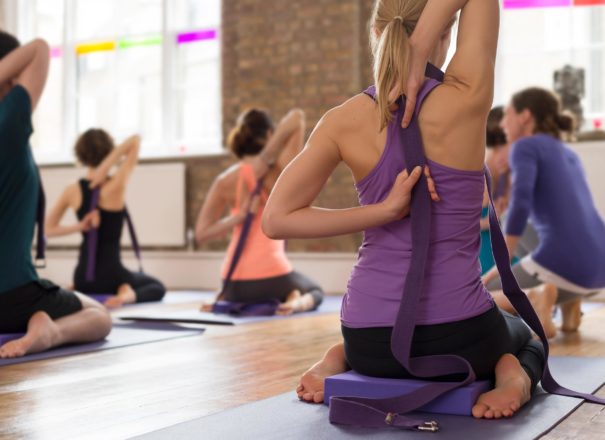What are the differences? Almost everyone knows what “yoga” is and the common question about Pilates is “is it like yoga?”.
The similarities are obvious: both are low impact and low resistance, use your own body weight and little equipment and have specific breathing routines. Both are mind-body focused and can be modified to suit your own needs. Depending on the class they can each burn 270-630 kcal in a session. But while it is easy to see why they are clumped together in many people’s minds, Pilates and yoga do have subtle differences and merits.
Origins
 Pilates: Originally devised by the German physical trainer Joseph Pilates for rehabilitation, it was adopted by dancers to build strength. After moving to the UK Pilates began developing his techniques when he was interned during World War I and later studied yoga as part of his research.
Pilates: Originally devised by the German physical trainer Joseph Pilates for rehabilitation, it was adopted by dancers to build strength. After moving to the UK Pilates began developing his techniques when he was interned during World War I and later studied yoga as part of his research.
Yoga: More than 5000 years old, it has roots in shamanism and Buddhism and was brought to the West about 100 years ago.
Pilates has six: flow, breathing, concentration, centering, control and precision.
For yoga it is relaxation, exercise, breathing, diet and meditation.
How Are They Done?
 Pilates: a structured class focusing on initiating each exercise with inhalation and contraction of core muscles. Designed to realign the spine, create strength in the core (including glutes and back) and create lean muscles rather than bulk, it emphasises using smaller muscles to support the body’s larger muscles, which are often over-used. It involves thinking of the space between joints to create length.
Pilates: a structured class focusing on initiating each exercise with inhalation and contraction of core muscles. Designed to realign the spine, create strength in the core (including glutes and back) and create lean muscles rather than bulk, it emphasises using smaller muscles to support the body’s larger muscles, which are often over-used. It involves thinking of the space between joints to create length.
The precision of small movements and connection between the mind and body are key.
Yoga: depending on the type of yoga (Vinyasa, Ashtanga, Kundalini, Hatha, Sivanada, Bikram to name a few) it can be dynamic or involve slower, held exercises using energy flow and breathing. There are thousands of combinations incorporating different postures, sequences and variations.
Every posture is accompanied by a counter posture. The body’s core is important but not as central to the practice as it is in Pilates. Yoga has a much greater spiritual focus.
Mind, Body & Spirit
Pilates: a strong body helps a healthy mind and strength from inner muscles to the outside of the body. The repetitive breathing can create a calming effect on the body but is not an essential part of the session.
Yoga: at the beginning of the class one is often encouraged to dedicate the practice to someone and focus your intentions. At the end of the class, there is a seal and appreciation of the work and energy that was involved. Meditation is the final part of the practice.
Breathing
 Pilates: in through the nose and out through the mouth. The breathing is concentrated through the ribs as the bellows, due to the contraction of the pelvic floor and transverse abdominus.
Pilates: in through the nose and out through the mouth. The breathing is concentrated through the ribs as the bellows, due to the contraction of the pelvic floor and transverse abdominus.
No belly breathing due to the held contraction of the above muscles.
(The position of the spine is key: beginners tend to work with a flat or long spine while advanced practitioners use the natural curves of the spine.
Yoga (above): uses Ujjayi breath and during energetic yoga such as Vinyasa and Ashtanga the breathing matches postures and movements.
The breath work is Pranayama which includes belly breathing. Primarily the breath stems from the nose for inhalation and exhalation.
Benefits
Pilates: helps deal with arthritis, urinary incontinence , joint injuries, back pain and respiratory conditions. Yoga: deals with anxiety, depression, multiple sclerosis, arthritis, high blood pressure, respiratory conditions, chronic pain and type 2 diabetes.
Diversification
 Pilates: there are different types of equipment including a Cadillac (left), ladder barrel and chair to aid in the initiation of muscles.
Pilates: there are different types of equipment including a Cadillac (left), ladder barrel and chair to aid in the initiation of muscles.
Yoga: each teacher creates a class based on a certain style of yoga.
Both yoga and Pilates are increasingly being mixed with different sorts of exercise to include cardio workouts using HIIT, boxing and Barre. A mix of the two creates Piyo, which helps create a unique and all-round session for people who are short of time.
In summary, each disciple has its own role and benefits. Disciples might disagree but one is not better than the other. If you are looking for a class that lowers stress and leaves you more flexible then perhaps yoga should be your focus.
Pilates is often used by athletes to generate overall muscle strength driven by the core. It creates a flat stomach and aligns your posture.
by Lucy Maria Potucek, a pilates and PT instructor who hopes to become a yoga teacher to create the optimal workout for the time- starved. 07795-250-932
The post Wellbeing: What’s Better for you? Pilates vs. Yoga appeared first on Felix Magazine.
Wellbeing: What’s Better for you? Pilates vs. Yoga posted first on http://www.felixmagazine.com/
No comments:
Post a Comment